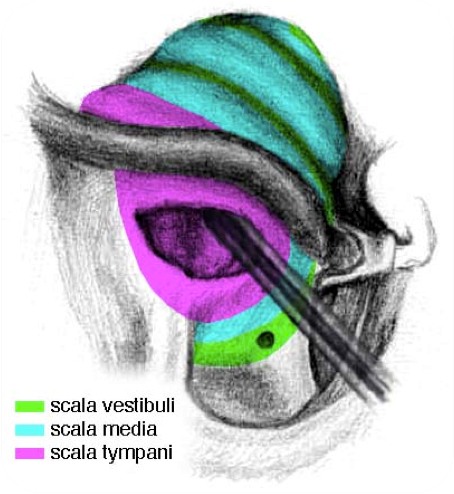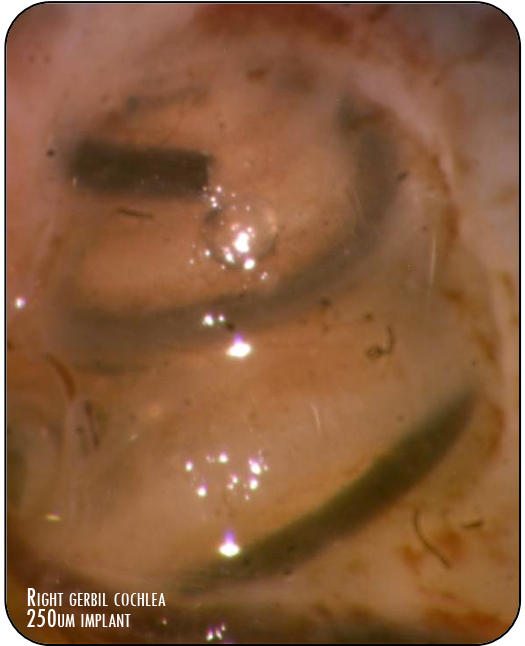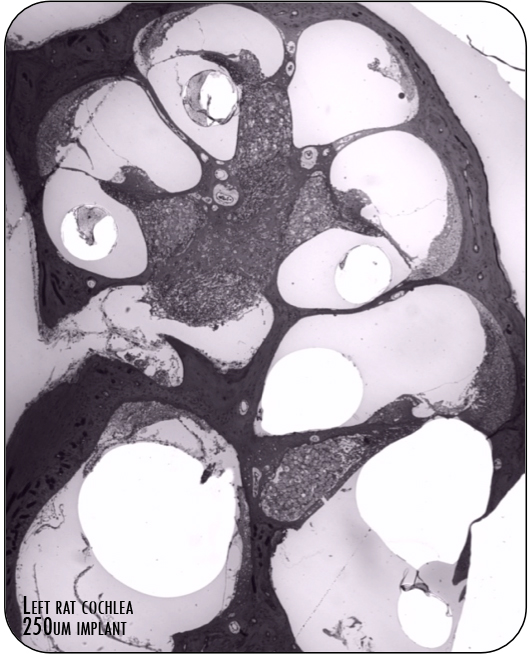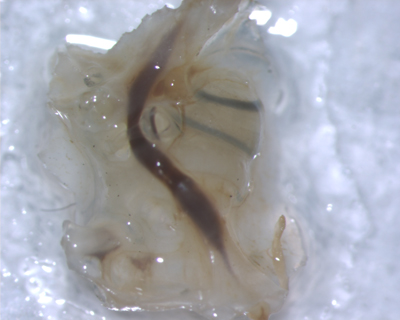Cochlear Implants
Cochlear implants help those who have sensorineural hearing loss hear again. However, the process of implantation destroys all residual hearing since the implant is pushed into the cochlea, so only those with profound or severe hearing loss are candidates for implantation. In order to change this, we developed a hydroassisted method in which a viscous fluid (hyaluronic acid, tradename Healon) "carries" the implant into the cochlea, thereby preventing damage.Method 1
Inject mock silicone implant into cochlea via round window with hyaluronic acid.
 Histological Studies
Histological Studies
- Successfully inserted two full turns
- No rupture of basilar membrane or fracture of spiral osseous lamina

 Results
Despite no damage to cochlear structure, there was a profound increase in compound action potential thresholds when measured before and after implantation. It was therefore hypothesized that a pulling of hyaluronic acid through the cochlea would be gentler and be less likely to cause damage.
Results
Despite no damage to cochlear structure, there was a profound increase in compound action potential thresholds when measured before and after implantation. It was therefore hypothesized that a pulling of hyaluronic acid through the cochlea would be gentler and be less likely to cause damage.
Method 2
Gently pull mock implant into cochlea through round window, using fluid flow created by hyaluronic acid. Histological Studies
Left gerbil cochlea, 180um implant. Again:
- Successfully inserted two full turns
- No rupture of basilar membrane or fracture of spiral osseous lamina
Sushrut Kale, Post-Doc
Mailing Wu, Columbia BME Alumna and Lab Technician
Vanessa Cervantes, Columbia 4th year Medical Student
Dominic Pisano, Tufts 4th year Medical Student
Project started by Nakul Sheth, Bronx Science High School Student




